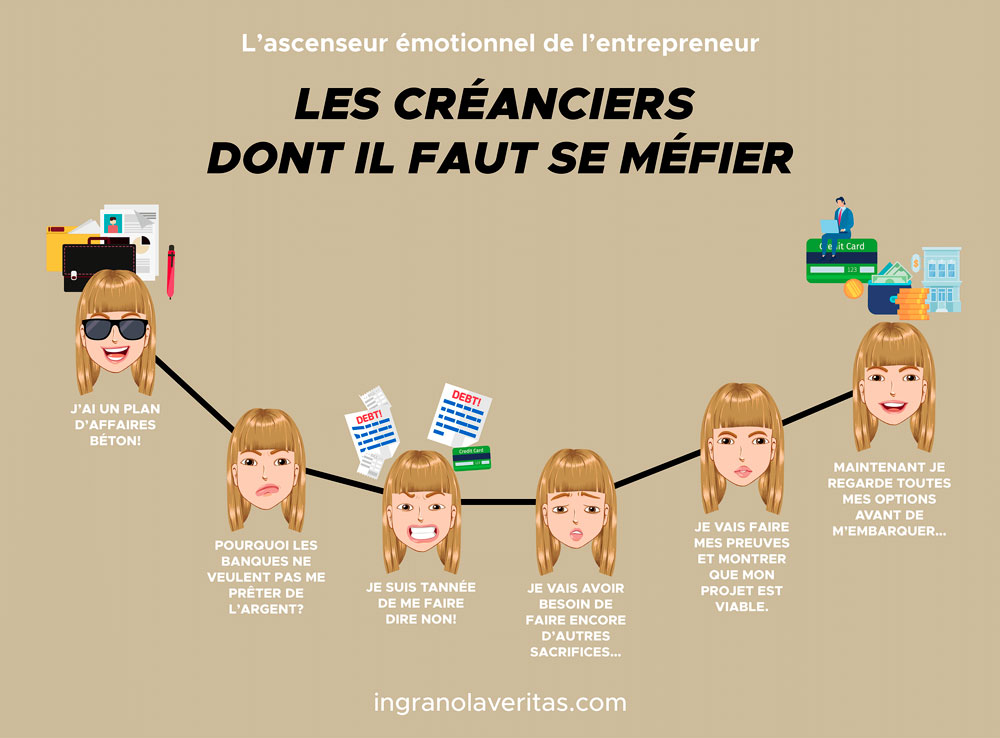Financing a business is one of, if not the main concern of most companies, and for good reason. Bad choices in the start-up phase can have an impact on the whole life of your business, whether long or short! If there are mistakes that can and should be avoided, others will inevitably arise. This is a complex subject and you will see how many issues are involved when reading the story of my experience. This will give you an idea of the errors you should avoid, as well as some tips and warnings that will be useful for optimal and sustainable business financing.

My professional path: A precarious beginning
I decided to create my own company as soon as I had finally paid off my student loans. I was eager to get out of the job market and think about how I could start my entrepreneurial journey.
The very first form of help I received was a financial contribution that was very similar to unemployment compensation (called the SEP: Self-Employment Program). It only lasted a short while and once the program ended, I had to dig first into my limited savings, and then into my RRSPs, in order to pay my expenses: rent, personal financial obligations, equipment for my home office, first production equipment, packaging and ingredients…
Fortunately, I won several competitions for which cash prizes allowed me to recover money… but not enough to pay myself a salary. I needed to survive, so I had to sublet my apartment and move in with a roommate. My everyday comfort was greatly reduced, but it was only the beginning of the sacrifices that would need to be made.
Fortunately, I was accepted into the SEP program of SAJE Montréal (now renamed the École des Entrepreneurs du Québec). The income I received during these 8 months really helped me refine my business plan and develop my business, with a bit more ease of mind. Very quickly, all the help I was receiving came to an end, and I found myself, once again, lacking money. After digging in my RRSPs a second time, I started doing some translation contracts. You can also rely on your loved ones for support and help to get you through this difficult period (with “Love Money”, as it’s called).
My funds were still insufficient, so it was time to go see my bank. I got approved for a very small line of credit, which made me realize that I was now more of a risk than an opportunity for them. Moving from employee to entrepreneur is not a positive change to facilitate access to financing. They did not want to give me any more debt, or very little, unless I had assets to use as collateral, which was not my case at the time. Even after increasing my sales and expanding my client base, my access to traditional bank financing remained highly problematic.
Soon after that, I met a banker who believed in my project and took the risk of giving me the maximum credit line at the beginning of my business project. I am still grateful to him today.
Finally, I was able to obtain a personal loan from the Canadian Youth Business Foundation, with a capital repayment freeze for the first two years. I was then able to consider recruiting my first employee…
The pact with the first employee
The hiring of the first employee or associate is a decisive moment. This person is the most important financial obligation of the company, and he can also become your first investor. He often is there to offer the help you needed. You can rely on this person and transfer some of your responsibilities and some of the most time-consuming tasks.
Very often, the first employee will get involved in the company more than a normal employee would in relation to his remuneration. But the workload is often greater than our ability to pay for it. Then, it happens: the feeling of being in their debt starts to grow. It would be a mistake, though, to choose to compensate for this debt by wanting to pay too much, or worse, by hastily granting shares of your company. It is important to get rid of this feeling of debt as an employee will never experience the same stress as you, nor the financial obligations and risks that come with it.
Never be afraid to let go of your first employee. It could cost you a lot more to keep him (even more if you are paying him too much, remember he is not working for free like you!). Unless he is willing to take financial hit with you and is personally invested in the project, the first employee will not necessarily be a good partner for you.


